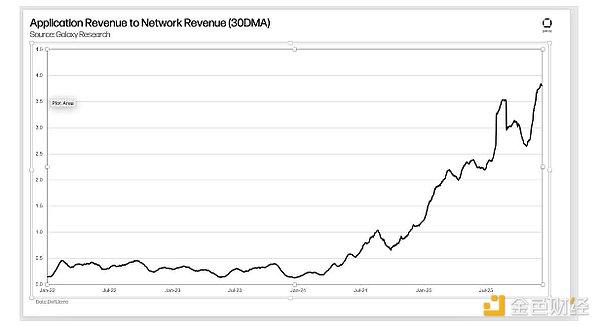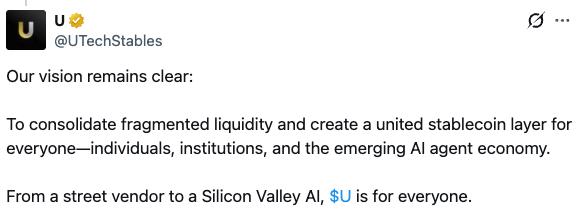Cardano’s DeFi ecosystem is experiencing unprecedented growth, even as the price of ADA remains stagnant. This puzzling situation begs the question: Why, despite a flourishing DeFi landscape, a strong community, and numerous innovative projects, is Cardano’s ADA coin lagging in value compared to its counterparts?
In this article, we delve into the factors driving Cardano’s DeFi boom, the reasons behind ADA’s lackluster price performance, and the platform’s potential to close the gap with leading DeFi contenders.
Understanding DeFi Metrics: Total Value Locked (TVL)
Smart contracts facilitate decentralized finance (DeFi) development, and total value locked (TVL) measures the crypto funds bound by these programs. Consequently, TVL serves as the primary indicator of public interest in a specific protocol or decentralized application (dApp).
Factors Fueling Cardano’s TVL Surge
Since February 2023, Cardano’s TVL has been on the rise. One contributing factor could be the introduction of new DeFi projects on the platform, luring investors with their promise of high yields. Additionally, the lower gas fees on Cardano, compared to Ethereum, make it an attractive alternative.Moreover, Cardano’s unique proof-of-stake consensus mechanism, which rewards long-term holders, may encourage users to lock up their assets in DeFi platforms. This could further drive the growth of TVL on Cardano.
ADA’s Price Puzzle: Why No Movement?
In contrast to the thriving DeFi ecosystem, ADA’s price remains stagnant. This phenomenon raises questions, as the value of native tokens on other platforms, like Ethereum, typically correlates with DeFi growth. Analysts speculate that the Cardano community’s focus on long-term holding might be limiting the token’s price movement.
Another factor could be the slow development of the Cardano platform, which makes investors hesitant to put their faith in ADA. Consequently, despite the DeFi boom, ADA’s price remains basically stagnant.
Can Cardano Close the DeFi Gap?
Cardano has the potential to become a formidable contender in the DeFi space. For this to happen, the platform must address the issues that hinder its growth. Overcoming the slow development pace and delivering on its promises could serve as catalysts for Cardano’s rise.
In the next one to two years, if Cardano continues to attract DeFi projects and users, it might challenge Ethereum’s dominance. However, for this to materialize, the platform needs to dispel doubts surrounding its leadership and capabilities.
Time for a Change at Cardano’s Helm?
As ADA’s price remains stagnant despite DeFi growth, some question if it’s time for Cardano’s CEO, Charles Hoskinson, to step down. Critics argue that the platform’s centralized leadership under IOHK contradicts the decentralized nature of blockchain technology.
Charles Hoskinson’s Hostile Stance Towards Profit-Seeking Investors
An interesting aspect of Cardano’s leadership is the polarizing figure of Charles Hoskinson, the platform’s CEO. Hoskinson has made it clear that he is not a fan of investors who seek to make money off their ADA investments. His hostile view toward these investors has been a source of controversy and debate within the Cardano community.
Hoskinson’s stance appears to stem from a belief that Cardano’s primary goal should be to revolutionize the blockchain industry and bring about positive change, rather than to serve as a vehicle for short-term gains. While this long-term vision is laudable, it has led to friction with a segment of the community who view their ADA investments as a means to profit.By dismissing the concerns of profit-seeking investors, Hoskinson could potentially alienate a significant portion of Cardano’s user base. Striking a balance between the platform’s larger mission and the interests of its diverse community will be crucial to Cardano’s ongoing success and growth.
The Impact of a Hoskinson Departure
A change at the top could bring fresh perspectives to the project, potentially addressing the issues of slow development and overhyped promises. However, Hoskinson’s departure might also lead to uncertainty, as he has been the driving force behind Cardano’s vision.
Envisioning a New Leadership for Cardano’s Future Success
While Charles Hoskinson’s long-term vision has driven Cardano’s development, some speculate that a change in leadership could benefit the platform. A new CEO with a fresh perspective might be better equipped to navigate the challenges Cardano faces and strike a balance between the platform’s larger mission and price appreciation.
A potential new leader for Cardano could possess the following qualities:
Adaptability and Flexibility
A successful CEO must be adaptable and flexible, capable of adjusting strategies to address the ever-evolving blockchain landscape. By being open to new ideas and embracing change, a new leader could help Cardano remain competitive and innovative.
Strong Communication Skills
Effective communication is crucial for rallying the community and fostering trust among stakeholders. A new CEO should be able to convey Cardano’s goals and progress transparently, addressing the concerns of investors, developers, and users alike. Hoskinson is ubiquitous on YouTube and Twitter but Cardano might be better served with a more strategic approach.
Focus on Decentralization
To counter criticisms of centralized leadership, a new CEO should prioritize decentralization, empowering the community to participate in the platform’s decision-making process. By involving the community, Cardano can tap into a diverse range of perspectives, spurring innovation and fostering a sense of ownership among users.
Balancing Vision and Practicality
While Cardano’s ambitious goals are commendable, a new leader should be pragmatic in their approach, balancing idealism with practical solutions. This means delivering on promises, streamlining development, and ensuring the platform’s growth aligns with the expectations of the community, including those seeking price appreciation.
Collaboration and Partnerships
A new CEO must recognize the importance of forging strategic partnerships and nurturing a collaborative ecosystem. By working closely with other blockchain projects, regulators, and industry stakeholders, Cardano can strengthen its DeFi offerings and accelerate its growth.
Ultimately, whether Cardano would be better served by a new CEO remains speculative. However, it is clear that striking a balance between the platform’s broader mission and the diverse interests of its community, including price appreciation, will be crucial to Cardano’s future success.
Cardano’s Market Perception: Ethereum Killer or Over-Hyped Project?
Cardano has been dubbed an “Ethereum killer” by some, but its performance has not lived up to expectations. Despite its flourishing DeFi ecosystem, the discrepancy between Cardano’s growth and ADA’s stagnant price raises questions about the platform’s true potential. In order to challenge Ethereum, Cardano must address several concerns and reshape its market perception.
Slow Development and Delays
Cardano’s development has been criticized for its slow pace and delays. While the platform has made significant strides, it still lags behind its competitors in terms of DeFi adoption and infrastructure. Accelerating development and delivering on key milestones could bolster Cardano’s credibility and market standing.
Overhyped Promises and Unrealized Potential
The hype surrounding Cardano has fueled expectations for groundbreaking innovations and rapid growth. However, the platform has struggled to meet these lofty expectations, leading some to label it as overhyped. To counter this perception, Cardano must demonstrate tangible progress and showcase the practical applications of its technology.
Centralized Leadership and the Need for Decentralization
Cardano’s development is led by IOHK, the company founded by Charles Hoskinson. Critics argue that this centralized leadership contradicts the decentralized nature of blockchain technology. Potentially stifling innovation and leading to an over-reliance on Hoskinson’s vision. Embracing decentralization and empowering the community in decision-making could help Cardano cultivate a more diverse and dynamic ecosystem.
Changing the Narrative and Building Trust
To shift its market perception and truly challenge Ethereum, Cardano must focus on changing the narrative around its platform. This involves transparent communication, delivering on promises, and actively showcasing the platform’s strengths. Building trust and credibility enables Cardano to form a positive feedback loop. Thus, drawing more developers, users, and investors to its ecosystem.
Before exploring factors behind the ETH-ADA valuation gap, understanding the broader context is crucial. The cryptocurrency market is highly competitive, and different platforms vie for dominance in various niches. While Cardano’s DeFi ecosystem has shown significant growth, the platform’s native token, ADA, has not experienced a similar surge in value. For instance, when compared to Ethereum’s ETH. In this section, we’ll explore the key factors that explain this disparity.
Dissecting the Valuation Gap: Why ETH Outshines ADA
The difference in valuation between Ethereum’s ETH and Cardano’s ADA can be attributed to several factors:
- First-mover advantage and network effects: Ethereum was the first major smart contract platform, launched in 2015. This early start has given Ethereum a significant advantage in terms of adoption, development, and infrastructure. The network effect further reinforces Ethereum’s position as the leading platform, attracting more developers and users, which in turn boosts the value of ETH.
- Larger ecosystem and more mature infrastructure: Ethereum boasts a significantly larger ecosystem, with thousands of decentralized applications (dApps) and a wide range of DeFi services. This mature infrastructure has led to increased demand for ETH as it is used for various purposes, such as gas fees, staking, and collateral in DeFi protocols.
- Market perception and credibility: Ethereum is perceived as the dominant smart contract platform, and its long-standing presence in the market has helped establish its credibility. On the other hand, Cardano has faced criticism for slow development progress and overhyped promises, which has hampered its reputation and valuation.
- Tokenomics and supply: The supply dynamics of ETH and ADA are different. While Ethereum has no fixed supply cap, its annual issuance rate has been decreasing due to network upgrades and the upcoming Ethereum 2.0 transition. Cardano has a fixed supply cap of 45 billion ADA, with around 33 billion currently in circulation. The differences in token supply and monetary policies also influence the value of both tokens.
- Market liquidity and trading pairs: Ethereum is more widely traded on a greater number of exchanges.This increased liquidity allows for larger trading volumes and more stable pricing, which can contribute to higher valuations.
Understanding Crypto Market Volatility and Valuation Factors
Factors account for ETH & ADA valuation gaps, but crypto markets’ volatility & diverse influences can cause swift changes, not always reflecting a project’s true worth or potential.
Navigating the DeFi Landscape: Cardano’s Key Competitors
Cardano’s main DeFi competitors are primarily other smart contract platforms that enable decentralized finance applications. Some of the most notable competitors include:
- Ethereum: The largest and most established smart contract platform. Ethereum is home to a vast majority of DeFi projects and boasts the highest TVL in the DeFi space.
- Binance Smart Chain (BSC): Launched by the popular cryptocurrency exchange Binance, BSC has emerged as a significant competitor in the DeFi landscape due to its low transaction fees and high-performance capabilities.
- Solana: A high-performance blockchain platform, Solana has been gaining traction as a DeFi competitor due to its high throughput and low-latency capabilities, which enable it to support a growing number of dApps.
- Avalanche: A Layer-1 blockchain aims to be a DeFi rival. With its unique consensus, high-performance, scalable, and interoperable platform for dApps.
- Polygon: A Layer-2 scaling solution for Ethereum that aims to improve its scalability and usability. It has attracted a growing number of DeFi projects looking to leverage the Ethereum ecosystem while mitigating congestion and high gas fees.
- Polkadot: Polkadot is an interoperable platform that allows multiple blockchains to connect and exchange data. Polkadot’s distinct architecture & cross-chain compatibility can draw DeFi projects aiming to harness multiple blockchain networks’ benefits.
These platforms, along with other emerging blockchain networks, form the competitive landscape for Cardano in the DeFi space. Each platform has its strengths and weaknesses, and the DeFi ecosystem continues to evolve as new technologies and innovations emerge.
The Road Ahead: Cardano’s DeFi Prospects and Challenges
Cardano’s DeFi ecosystem has witnessed remarkable growth; however, the native token, ADA, has not observed a correlated increase in value. This situation raises questions about the platform’s potential to compete with leading DeFi platforms like Ethereum.
To challenge Ethereum and other DeFi competitors, Cardano must address slow development, overhyped promises, and centralization concerns. Additionally, the platform needs to balance long-term goals with diverse community expectations, including price appreciation.
By tackling challenges and attracting DeFi projects and users, Cardano could become a DeFi powerhouse. The platform’s future hinges on managing competition, embracing innovations, and delivering on promises for long-term value.







